On August 19, 2025, Alibaba open-sourced Qwen-Image-Edit, a powerful image editing model built upon the 20B Qwen-Image framework. This model excels in preserving the original style of images while enabling precise bilingual (Chinese and English) text editing, as well as diverse semantic and appearance-level modifications. It significantly lowers the technical barriers to professional-grade image editing, making complex tasks previously requiring software like Photoshop achievable with ease.
Core Advantages
Qwen-Image-Edit stands out due to its three key strengths, addressing a wide range of editing needs from text manipulation to multidimensional image adjustments.
Bilingual Precision Text Editing
Qwen-Image-Edit offers highly accurate support for editing text in both Chinese and English. Whether adding, modifying, or adjusting text within images, the model precisely interprets user instructions while ensuring font selection and layout seamlessly match the image’s overall style.
Fine-Grained Appearance Editing
The model excels in appearance adjustments, supporting operations such as adding, removing, or inserting image elements. From eliminating unwanted objects to restoring old photos, Qwen-Image-Edit ensures editing precision while maintaining visual consistency, resulting in natural, seamless edits without noticeable traces of modification.
Practical Use Cases
To demonstrate the capabilities of Qwen-Image-Edit, we highlight five practical use cases showcasing its ability to handle diverse image editing scenarios effortlessly.
Old Photo Restoration
Aged photos often suffer from scratches, noise, and blurred details, posing significant restoration challenges. With Qwen-Image-Edit, users can input a prompt such as: “Restore old photos by removing scratches, reducing noise, enhancing fine details, upscaling to high resolution, maintaining realistic vintage aesthetics and natural skin tones, clarifying facial features, and ensuring no distortion.” The model effectively revitalizes such images.
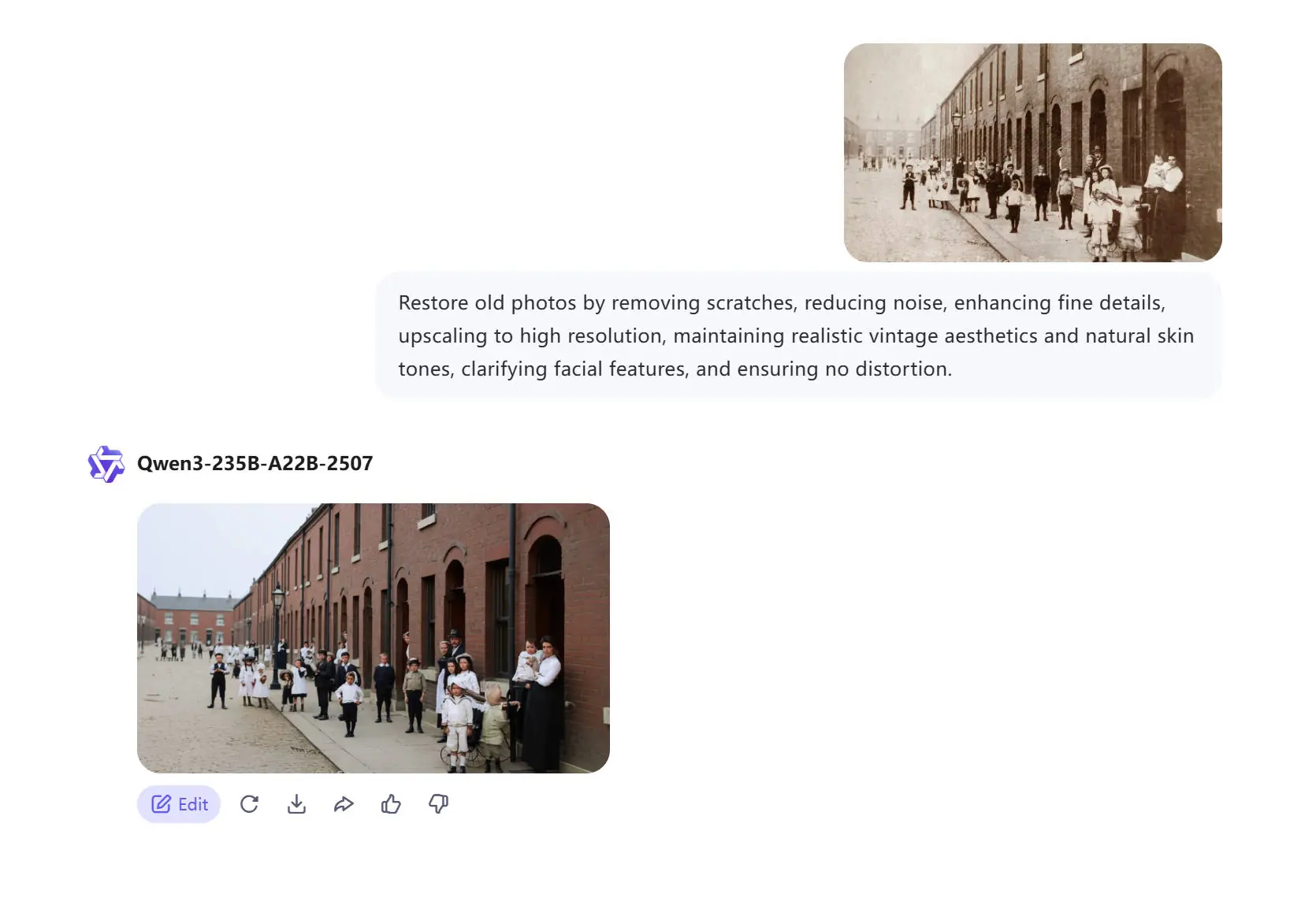
Object Removal
In everyday scenarios, images may contain unwanted elements, such as a fork on a plate or irrelevant objects in a landscape photo. For instance, the instruction “Remove the fork from the plate” enables the model to cleanly eliminate the specified object while preserving the image’s integrity.
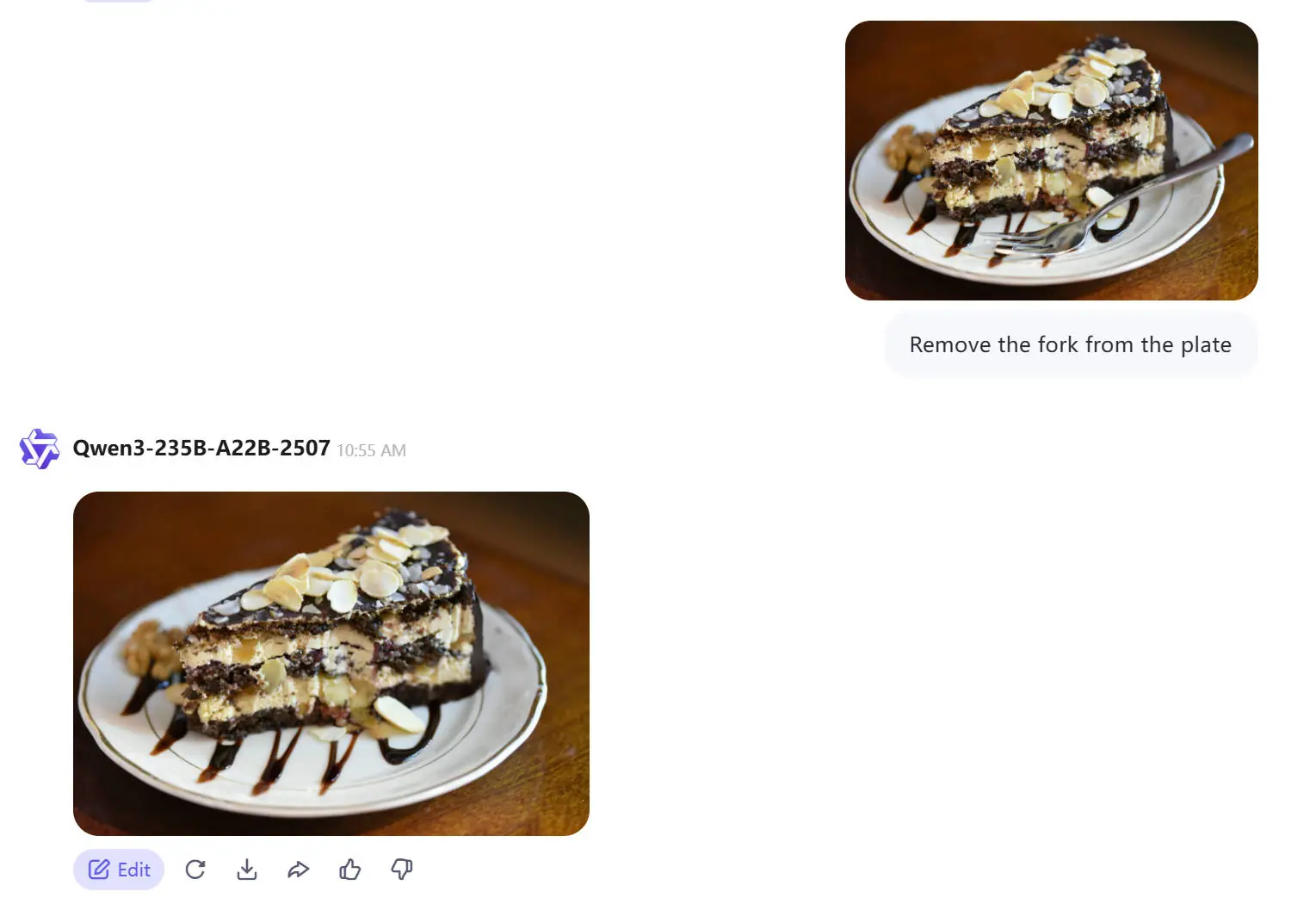
Adding Elements
Users can also add elements to images. For example, the prompt “Add a strawberry on top of the cake” seamlessly incorporates the requested element into the scene, maintaining visual coherence.
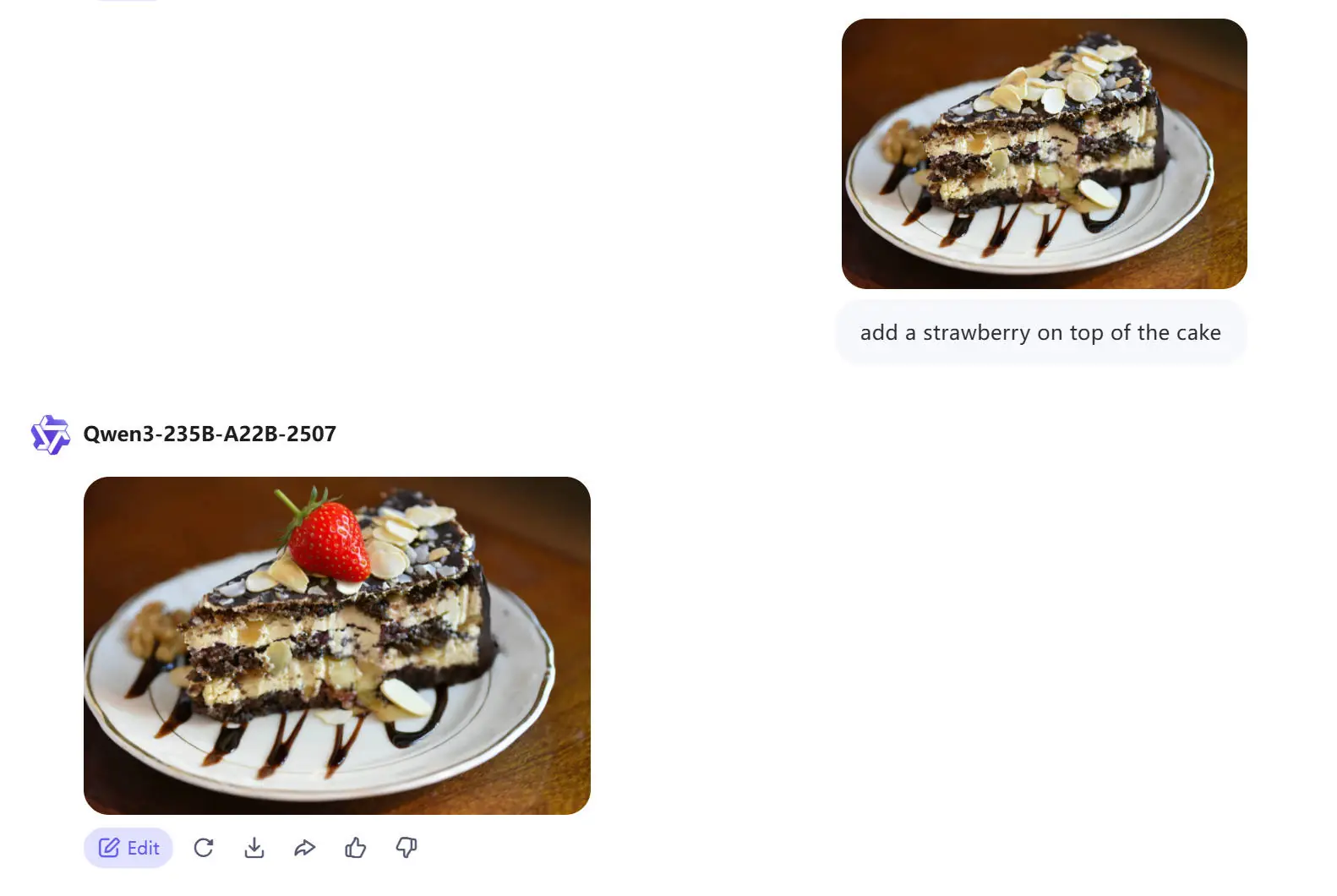
Artistic Style Transfer
The model can transform images into various artistic styles while preserving their original layout and scene. For example, applying the prompt “Convert the image into a Japanese anime style” to a cake image results in a stylized version that retains its core composition.
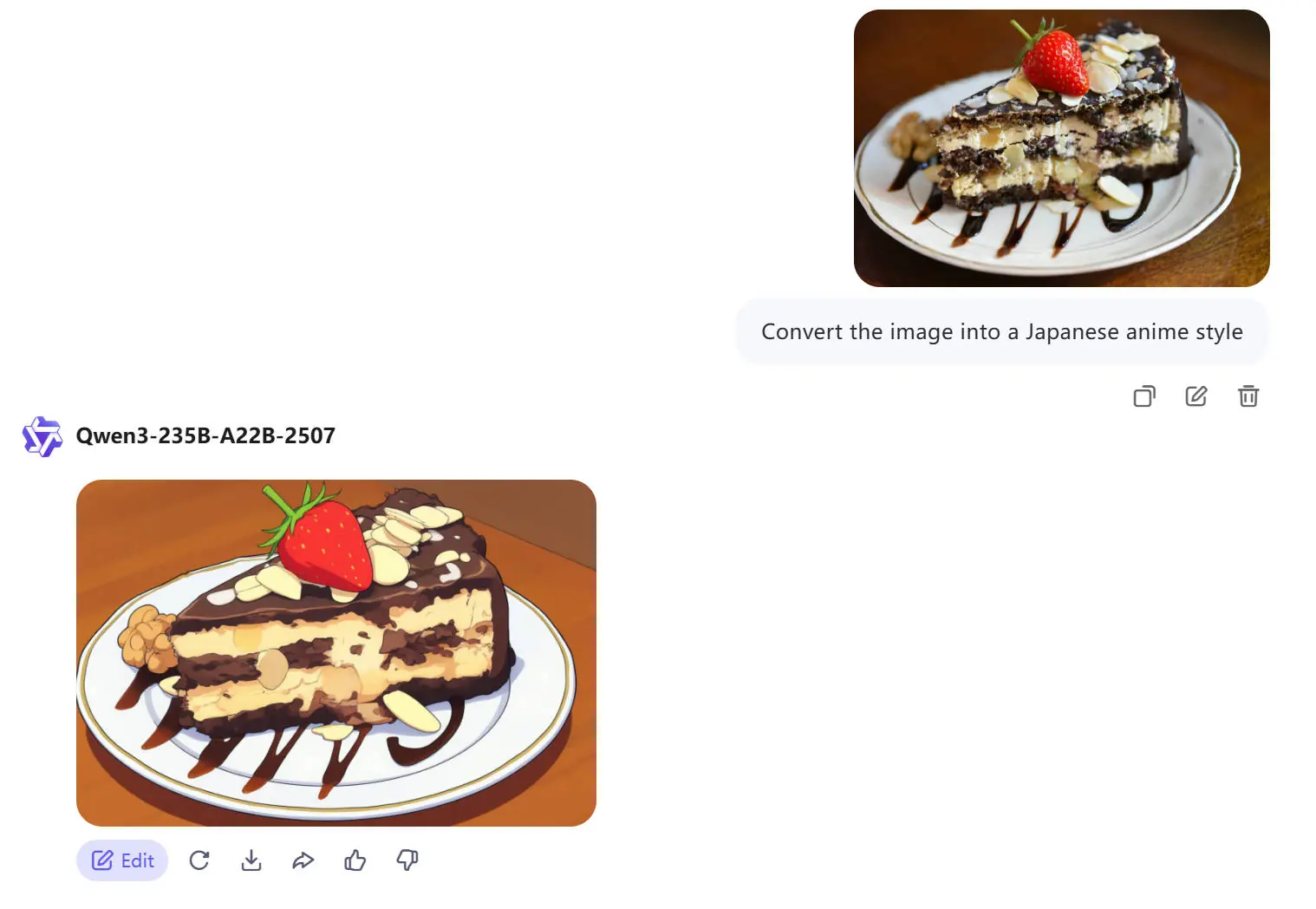
Perspective Adjustment
Using a character from Demon Slayer as an example, users can adjust perspectives with prompts like “Adjust the perspective to show the character’s front view while maintaining natural proportions and no distortion.” The model ensures accurate and natural results.
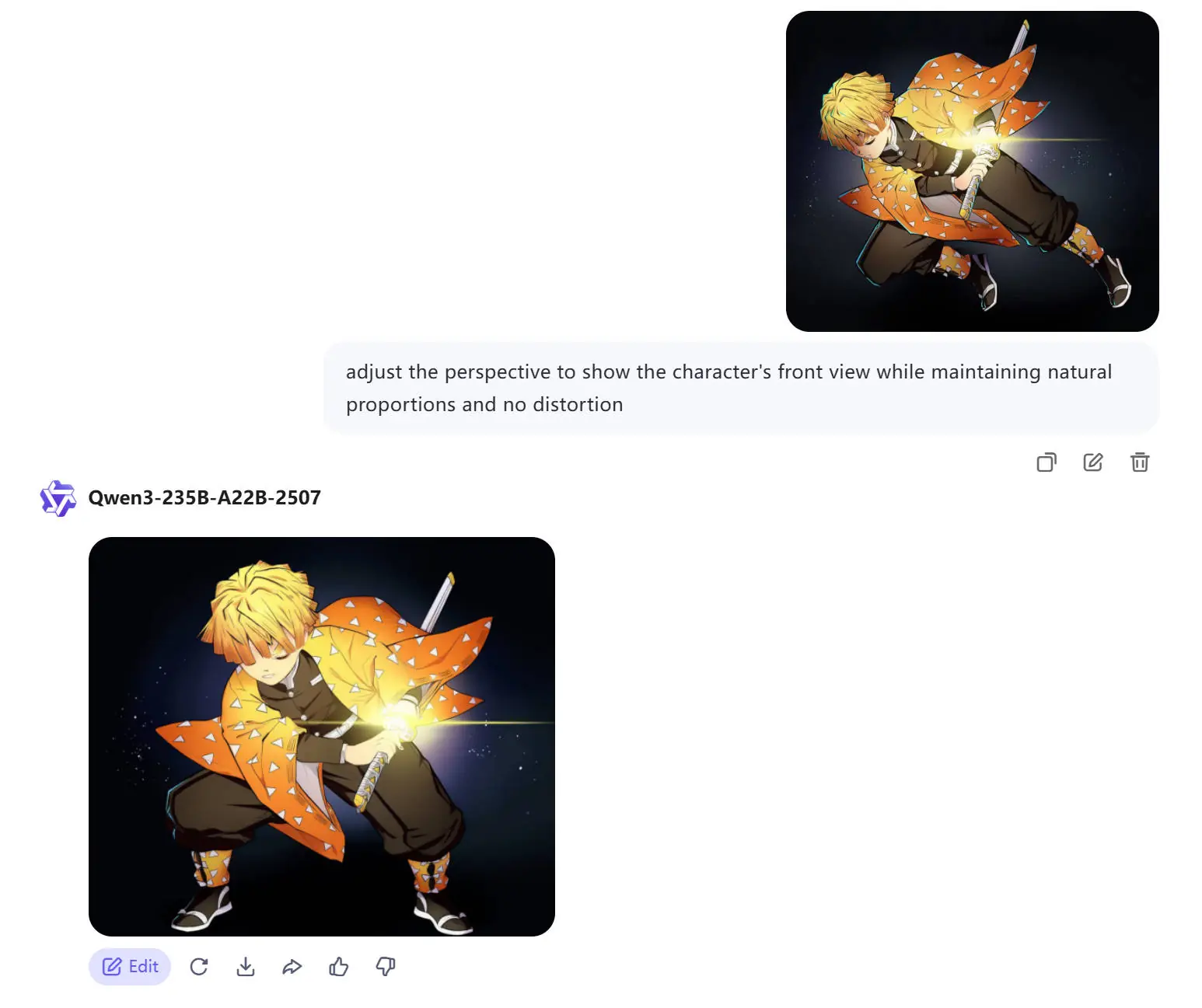
Free Trial
Qwen-Image-Edit is available for free trial via the Qwen website at https://chat.qwen.ai/?inputFeature=image_edit. Users can upload images, input editing instructions, and experience the model’s robust features in real-time through a browser, without the need for complex software installation.
Open-Source and Deployment Requirements
Qwen-Image-Edit is fully open-source, accessible at https://huggingface.co/Qwen/Qwen-Image-Edit, allowing developers to perform secondary development and customization. The model has modest hardware requirements: a minimum of 8 GB VRAM and 64 GB system RAM, with an RTX 4070 or better recommended. For complex editing tasks or multitasking, 128 GB RAM or higher is advised to ensure optimal performance.
Conclusion
Qwen-Image-Edit is a highly capable image editing model that delivers precise, high-fidelity results across a variety of tasks. For users dealing with large generated images, tools like zippic can be used to compress files while maintaining clarity, effectively reducing file size without sacrificing quality.
